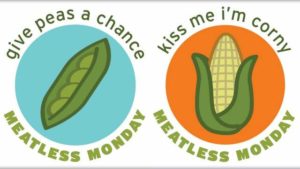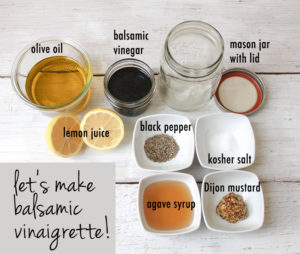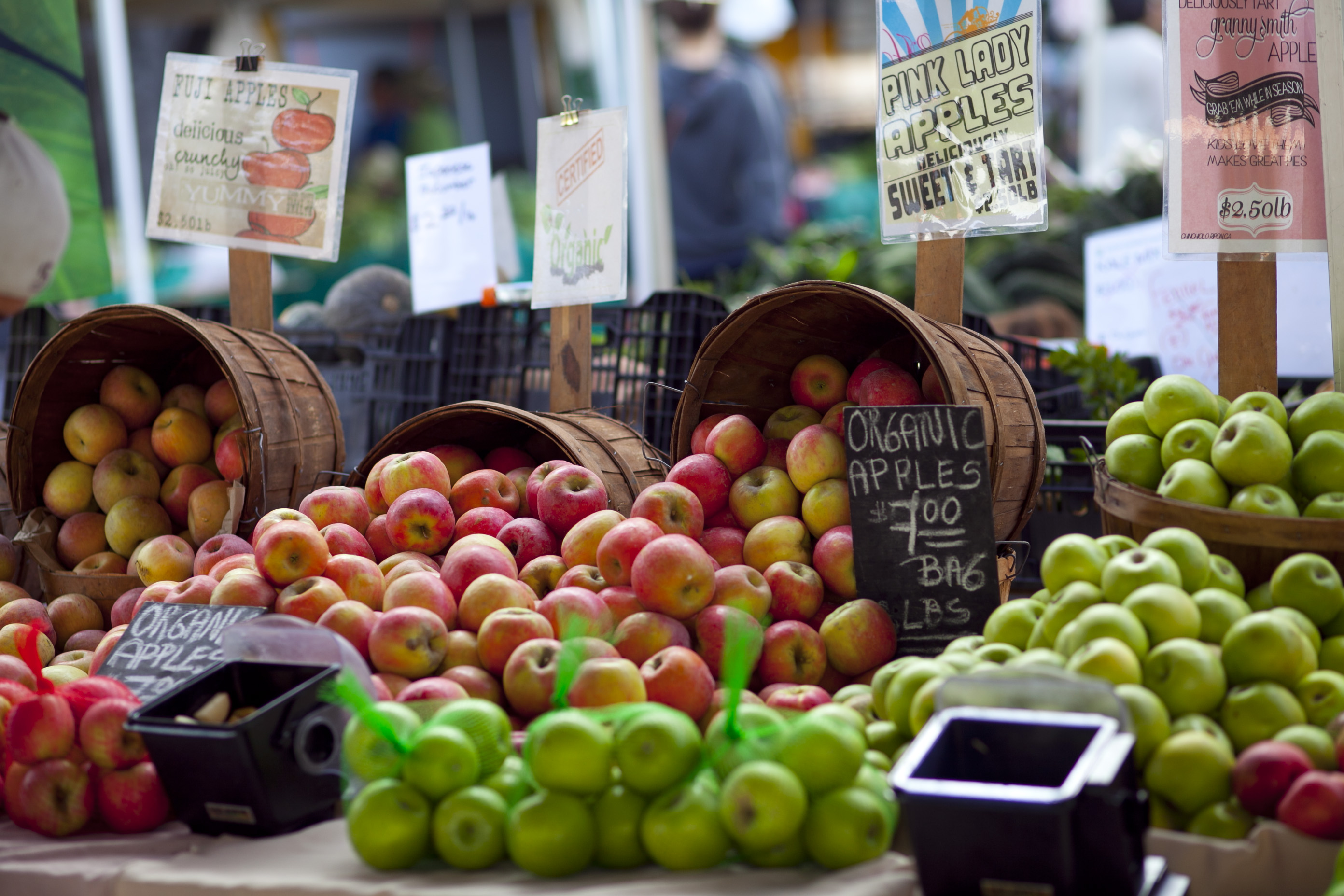Welcome to Healthy Habits
Healthy Habits | Week 3: Getting Fancy
Week 3: Getting Fancy
DOWNLOADS
“A comfort zone is a beautiful place, but nothing grows there.”
Week 3 builds on the previous fourteen days and challenges your culinary skills, all while keeping it fun and interesting! The next seven days require planning and possibly some extended time in the kitchen (30 minutes). Take a few minutes before the week starts to set yourself up for success and map out how you’ll accomplish the daily challenge.
Week 3 Details
- Day 1: Meatless Monday
 We are upping your game this week – the task is to go an entire day without meat (animal sources of protein). If an entire day seems overwhelming, try going meatless just at dinner. Most people struggle the most with this meal so here are some delicious plant-based recipes to try. Easy swaps – tofu for eggs, beans for any meat, grilled portobello mushrooms for steak, and spiced roasted cauliflower for ground meat in tacos.
We are upping your game this week – the task is to go an entire day without meat (animal sources of protein). If an entire day seems overwhelming, try going meatless just at dinner. Most people struggle the most with this meal so here are some delicious plant-based recipes to try. Easy swaps – tofu for eggs, beans for any meat, grilled portobello mushrooms for steak, and spiced roasted cauliflower for ground meat in tacos.You don’t have to be a full-fledged vegetarian to reap the benefits of a veggie-packed lifestyle. Even replacing a couple of meals a week with a meatless meal can have a positive impact on your health. In fact, going meatless just once a week can reduce your risk for chronic diseases, like obesity, cancer, and diabetes. Going meatless for a meal or two doesn’t mean you have to start chowing down on tofu or sprout. Beans, quinoa, legumes, and nuts are great vegetarian sources of protein. An added bonus? Meatless meals tend to be friendlier on the budget.
- Day 2: Try Adding New Herbs and Spices to Your Meals
Season your food with one new herb or spice. I swear my food came alive with flavor when I started bringing home fresh herbs. Who made salt and pepper the end all be all of the culinary seasonings?
Instead of shaking salt on all your food, try using herbs to flavor them instead. For breakfast, use cinnamon, cardamom, and ginger for a sweet and spicy flavor. For lunch, use Italian seasonings, sage, black pepper, and/or cayenne and turmeric. For dinner, try some garam masala, pepper, oregano, basil, and thyme. Mix these up however you like, but use them more often; they’re some of the best ingredients that provide antioxidants, mood-boosting benefits, and even anti-cancer benefits. They also reduce blood pressure levels, unlike excess salt that can lead to hypertension (chronically high blood pressure).
- Day 3: 5 Ingredient Meals
The task today is to make a nutrient-dense meal with (5) five ingredients or less. There are beauty and simplicity in learning to prepare a dish with only a small amount of components. I can’t count how many times I’ve heard someone say “I have nothing in the house to eat” and use that as a justification for eating out (usually grabbing an unhealthy option). The goal today is to remind all of us how easy, affordable and quick it can be to whip up a stellar meal with only a few ingredients.
Some of my favorite combos:
- Eggs + kale + kamut + avocado + salsa
- Quinoa + bell pepper + tofu + peanuts + low sodium soy sauce
- Frozen salmon burger + purple potatoes + spinach + olive oil + pesto
- Day 4: Make Your Own Salad Dressing
 If you were to open my fridge you’d find no less than 4 jars of store-bought salad dressing and 4 tiny mason jars of homemade salad dressing. To say I love variety is an understatement. What you dress your salad with should be as healthy as the salad itself. If you just made a green salad chocked full of vitamins and nutrients, why ruin it with a store-bought dressing that may quite possibly have refined sugars, poor quality oils, loads of sodium and artificial flavors? And while a purchased dressing may seem convenient, a homemade version is just about one of the easiest recipes that I teach in my cooking classes.
If you were to open my fridge you’d find no less than 4 jars of store-bought salad dressing and 4 tiny mason jars of homemade salad dressing. To say I love variety is an understatement. What you dress your salad with should be as healthy as the salad itself. If you just made a green salad chocked full of vitamins and nutrients, why ruin it with a store-bought dressing that may quite possibly have refined sugars, poor quality oils, loads of sodium and artificial flavors? And while a purchased dressing may seem convenient, a homemade version is just about one of the easiest recipes that I teach in my cooking classes.Every homemade salad dressing, in my opinion, should be made up with a few key staples: a base, an acid, and a thickening agent. From there you can go wild with different spices and herbs.
Oil: Oils are used as the base of a salad dressing and to add a smooth consistency and flavor. Good quality oils contain healthy essential fat that the body cannot make on its own. These fats actually help lower cholesterol, blood sugar levels, speed up the metabolism, and protect the body from free radicals by supporting the immune system.
Try: hemp oil, flaxseed oil, extra virgin olive oil, avocado oilVinegar/acid: A little goes a long way when adding vinegar/acid to a dressing for flavor and health benefits. Vinegar adds a unique taste while encouraging a healthy bowel, improving digestion, and providing the body with vitamins and nutrients. Citrus acids from lemon also support digestion and are full of minerals and vitamins. Adding citrus acids to salad greens actually, helps the body absorb nutrients while providing the body with antioxidants.
Try: apple cider vinegar, fresh lemon juice, fresh lime juice, balsamic vinegar, coconut vinegar, brown rice vinegarAdding your own natural thickener to a salad dressing ensures that you’re not consuming cheap filler. Thickeners are helpful in emulsifying all of the ingredients together. Based on preference, you may add a sweet or savory natural sweetener to bring out the flavor in the salad dressing. Thickening agents can be as basic as Dijon and extend to ground chia seeds to add even more omega fats.
Try: Dijon, tahini, avocado, chia seeds, ground flax seeds, honey, maple syrup#INPYNAPPROVED Dressings: download the pdf here.
- Day 5: Try a New Food You've Never Had Before
Today’s task pushes you right outside your comfort zone. Try one new food “trend”; something your peanut butter and jelly loving kids would consider weird, gross, crazy or outrageous.
You learned to make the transition from chicken fingers and grilled cheeses to asparagus and steamed fish as you became a health and weight-conscious adult. Now I’m going to push you a bit further on your fit and fabulous journey. The foods listed here may sound — and look — sort of odd, but we have faith that you can learn to love these even stranger, but super healthy foods if for no other reason that they will do your body real good!
Consider some of these:
- Goat Milk (Nate Helmings’ favorite) – The most widely consumed milk drink in the world (outside the US) and is FULL of nutrients. Rich in calcium, B Vitamins, and magnesium, goat milk is also easier to digest than cow’s milk and contains more beneficial fatty acids which help lower cholesterol.
- Tiger Nuts – What tastes like a nut, looks like a tiger but is neither of those things? You guessed it! Antioxidant-rich, antibacterial tiger nuts. Tiger nuts are small root vegetables grown in Africa and Spain. They are rich in prebiotic fiber and help your gut’s natural probiotics thrive. A single ounce of TigerNuts has 40% of our daily recommended fiber!
- Cricket Flour – Did you know that cricket flour — also known as cricket protein powder — has almost triple the amount of protein present in sirloin and double the protein of chicken? That’s right, cricket flour! Edible insects are all the rage these days and you can find them in everything from protein powders to snack bars.
- Cod Liver Oil – Loaded with Vitamins A and D, cod liver oil helps alleviate symptoms of arthritis, various body aches and can even lessen pains associated with MS. I alternate fish oil and cod liver oil every other month.
- Kelp Noodles – They have over 70 nutrients and minerals, including iron, iodine, calcium, magnesium, and potassium. Kelp noodles contain over 21 amino acids and can help improve thyroid function from the iodine it delivers. Kelp noodles contain no fat, cholesterol, protein, or sugar. Per serving, they typically contain 1 gram of carbohydrates, 1 gram of fiber, and 35 milligrams of sodium. In addition, kelp noodles typically provide 15 percent of your daily calcium needs and 4 percent of your daily iron needs per serving.
Less wild but still unheard of for some:
- Kimchee – One serving of this fermented cabbage contains a full days’ worth of Vitamin C, as well as carotene and dietary fiber. But one of the highest benefits could be the healthy bacteria that aid digestion.
- Kohlrabi – A cousin of cabbage and broccoli, this funny looking veggie looks like a turnip and is often a light green or purple color with white stripes. Great in salads or stir-fries, Kohlrabi packs a lot of Vitamin C, potassium and cancer-fighting phytochemicals.
- Jackfruit – A large (they can weigh up to 100 pounds) green tree fruit native to Southeast Asia, is the new darling in vegan protein country. Look for jackfruit in BBQ dishes, salads, tacos, and wraps. Jackfruit really needs to be combined with a sauce or marinade to give it any flavor. The texture is like that of pulled chicken or pork, and you can even find ready-to-eat versions in grocery stores.
- Seaweed (Arame or Wakame) – These sea vegetables are collected off the coast of Japan and loaded with vitamins and minerals. Arame has been shown to strengthen nails and hair, and improve complexion. Add it to a salad or soup.
- Day 6: Healthy Menu Ordering
Order a healthier dish at a restaurant – It can be so hard to choose something new when you have a favorite comforting go-to meal at a restaurant, but choosing a healthy option can go a long way, especially if you dine out a lot. Some restaurant dishes can pack thousands of calories in a single “serving” without you even knowing it. Look for helpful words like broiled, grilled, and baked that reflect healthier options. Stay away from sauces or soups with cream in the name. These tend to be high in calories and fat. Ask if you can switch your side to the vegetable of the day instead of fries, and wrap up leftovers to go because restaurant portions tend to be huge!
If you aren’t eating out today – simply download a menu from a restaurant you’ve always wanted to visit and challenge yourself to put together the healthiest meal possible. The more you practice this skill the easier it gets.
- Day 7: Organic All The Way
Purchase one organic item- meat, fish, fruit or veg. I know what you’re thinking- will one day or one meal really make a difference? In the short term, no it won’t but in the long term, absolutely. This month is about creating new habits through small tasks. Let’s look at the math for a second, shall we? Simply switching your weekly apples from commercially produced to organic means that if you buy 5 apples a week, then over a year you’ll eat 260 LESS chemical/toxic/dangerous apples. What if 200 TRE runners did the same thing; that would be 52,000 apples!!! Do you see the power now of one small change?
The term “organic” refers to the way agricultural products are grown and processed. While the regulations vary from country to country, in the U.S., organic crops must be grown without the use of synthetic pesticides, bioengineered genes (GMOs), petroleum-based fertilizers, and sewage sludge-based fertilizers. Organic livestock raised for meat, eggs, and dairy products must have access to the outdoors and be given organic feed. They may not be given antibiotics, growth hormones, or any animal by-products.
How your food is grown or raised can have a major impact on your mental and emotional health as well as the environment. Organic foods often have more beneficial nutrients, such as antioxidants, than their conventionally-grown counterparts and people with allergies to foods, chemicals, or preservatives often find their symptoms lessen or go away when they eat only organic foods.
- Organic produce contains fewer pesticides. Chemicals such as fungicides, herbicides, and insecticides are widely used in conventional agriculture and residues remain on (and in) the food we eat.
- Organic food is often fresher because it doesn’t contain preservatives that make it last longer. Organic produce is often (but not always, so watch where it is from) produced on smaller farms near where it is sold.
- Organic farming is better for the environment. Organic farming practices reduce pollution, conserve water, reduce soil erosion, increase soil fertility, and use less energy. Farming without pesticides is also better for nearby birds and animals as well as people who live close to farms.
- Organically raised animals are NOT given antibiotics, growth hormones, or fed animal byproducts.Feeding livestock animal byproducts increase the risk of mad cow disease (BSE) and the use of antibiotics can create antibiotic-resistant strains of bacteria. Organically raised animals are given more space to move around and access to the outdoors, which help to keep them healthy.
- Organic meat and milk are richer in certain nutrients. Results of a 2016 European study show that levels of certain nutrients, including omega-3 fatty acids, were up to 50 percent higher in organic meat and milk than in conventionally raised versions.
- Organic food is GMO-free. Genetically Modified Organisms (GMOs) or genetically engineered (GE) foods are plants whose DNA has been altered in ways that cannot occur in nature or in traditional crossbreeding, most commonly in order to be resistant to pesticides or produce an insecticide.





